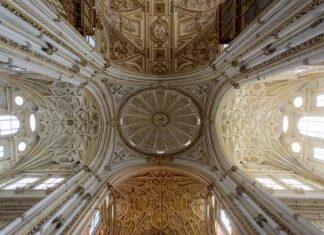This Week Trends
Among the most effective Poker online technique is to take part in online slot machine events. Slot events are preferred these days as well as you can find them at tiny as well as huge online casinos worldwide.The initial...
A regular cleaning schedule includes either weekly or biweekly check outs from a maid. Duties typically include cleaning and cleaning down of surface areas, vacuuming carpets, sweeping and mopping floorings and removing trash. Spring cleaning gets all the splendor,...
Playing gambling establishment online has always had numerous benefits over playing gambling establishment the conventional way. The population of the world appears to be enjoying this type of online games to a big degree. A considerable factor for this...
Hot Stuff Coming
Get Rid Of Crypto Finance Issue Once And For All
Cryptocurrencies operate on a distributed public ledger called blockchain, a record of all transactions upgraded and held by currency holders. Systems of cryptocurrency are...
Receive Better Online Slot Final result By Following 8 Uncomplicated Steps
When it concerns the domain of rewards, you can break them down into regional as well as network ones. So, what difference exists between...
Very top 5 Funny Korean Massage Guide Quotes
Individuals who all are interested in belonging of Korean trip with your loved ones, then this could be the very best spot where you...
Every thing You Need To Learn About Psychedelics Online Drug
One of the most engaging evidence of how psilocybin functions originates from a double-blind randomised controlled trial (the gold-standard of clinical studies) that compared...
LATEST ARTICLES
To Men and women That Want To Kickoff Electric Scooter Innovation...
Among the top competitors in the electric scooter market is the Xiaomi Mi Electric Scooter. Understood for its smooth design, excellent performance, and budget...
Five Awesome Things You Can Find out From Studying Cellulose Ether...
Cellulose ether is a versatile and widely-used compound that plays a crucial role in various industries, ranging from pharmaceuticals and food to construction and...
Feel In Your AI Chatbot Skills But Do not Stop Boosting
Furthermore, AI chatbots use a smooth and intuitive user experience, allowing users to engage with them using natural language and conversational user interfaces. Instead...
Take This Top Ranked Seo Companies Analysis And You’ll See Your...
In addition to improving search engine rankings and driving natural traffic, SEO services agencies can likewise help businesses improve their total online presence. Many...
8 Effective Techniques To Get More Out Of Polarized Sunglasses
In conclusion, replica sunglasses offer a budget-friendly alternative to designer eyewear, permitting consumers to enjoy the latest styles and patterns without breaking the bank....
Wish To Step Up Your Financing Electronic Contract? You Need To...
Another advantage of electronic contracts is enhanced security and compliance. Digital signatures and encryption innovations ensure that electronic contracts are secure and tamper-proof, securing...
Reasons why Every thing You Know About Boiler Technology Is A...
No matter the kind of boiler, the standard concept of operation remains the very same. A boiler heats water or other fluids to a...
Precisely how To Start A Business With Boiler Technology
No matter the type of boiler, the basic concept of operation stays the same. A boiler heats water or other fluids to an established...
Take Advantage Of Portable Speakers - Read These 10 Technique
When it comes to picking the best speaker for your requirements, it can be a challenging job given the huge selection of options available...
Employ These 8 Secret Method To Improve Audio Speakers
Ultimately, the choice of audio speakers boils down to personal choice and budget. Whether you prefer the convenience of wireless connectivity or the uncompromising...




















